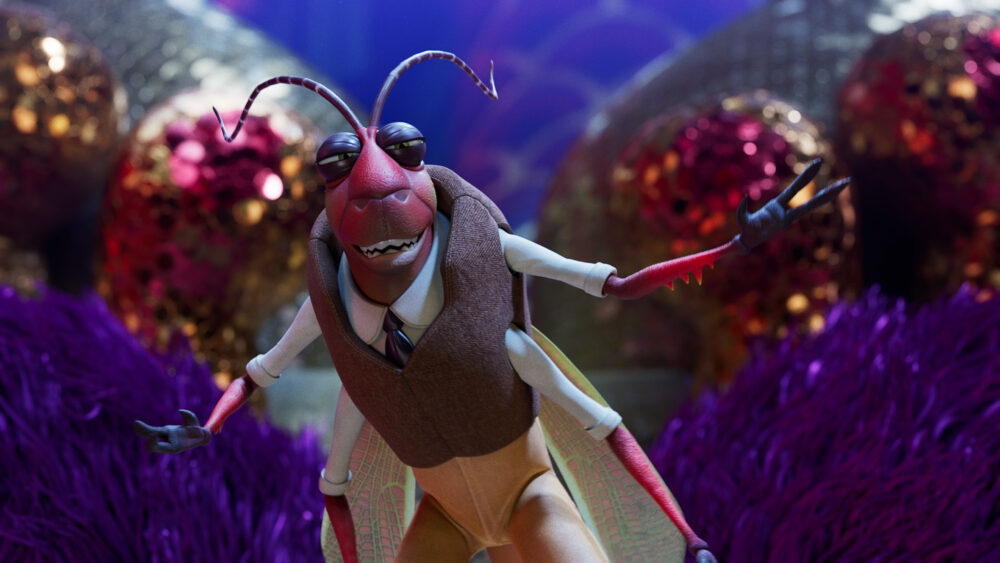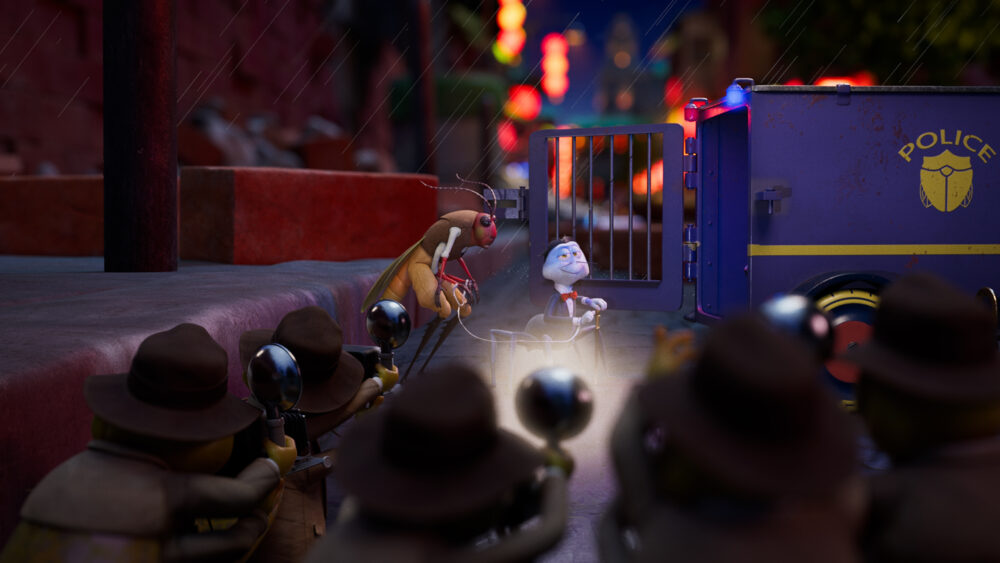A mysterious web of intrigue is spun in the new CG-animated movie Inspector Sun. The feature, which is set in the 1930s, aboard a Pan Am seaplane during a flight between Shanghai and San Francisco, centers on spider Inspector Sun’s investigation into the death of the powerful Bugsy Spindlethorp. The Spanish production, which is produced by The Think Lab, Kaspers Animation and 3Doubles and directed by Julio Soto Gurpide (Deep) has been nominated for a Goya (Spanish Oscar) this year. We were thrilled when the director agreed to answer a few of our questions about this new movie:

Animation Magazine: Congrats on the U.S. release this week through Viva Kids. Can you tell us a bit about the history of the movie?
Julio Soto Gurpide: Inspector Sun started when we read Rocco Pucillo’s script in 2017. The script had won the prestigious Samuel Goldwyn award, and it was the first time the script for an animated movie got it. Tim Burton had the option for a while but eventually he dropped, it so we jumped in and optioned the script. From that point on, it was a matter of doing some re-writes to make it more family friendly, adding a bit more humor to it and developing the comical counterpart of Janey, so that the story would be appealing to a wider range of kids and their parents … and of course finance the movie, which took a long time!
What was it about the project and the characters in Inspector Sun that appealed to you?
After reading the first few pages, I realized that the universe that Rocco had created was very unique. The movie was set in the crazy 1930s, during prohibition — a film noir for kids with a murder mystery. All the stereotypes of the genre were there: smugglers, millionaire mobsters, contract killers, femme fatales, big bands playing at balls, mutant monsters and a very evil arch nemesis. It had all the elements of a great story. We still had to develop the right look for it, the Art Deco, the locations and the overall look, so that this universe would be appealing to kids rather than freak them out, because we all know spiders can cause some apprehensions.
Where was the animation produced and which tools were used?
All the financing, creative output and animation were done 100% in Navarra, at our studio based in Pamplona (where they run the bulls, yes!), later on, postproduction was done in the Canary Islands. Spain is very appealing because we have up to 75% tax incentives these days and that is an amazing amount of soft money to finance expensive projects such as animated films. We used a combination of Maya for all 3D related tasks, Unreal Engine for some parts of the movie (100% of what you see in some of the shots is Unreal Engine), Substance Painter for shading and Nuke, Premiere and Photoshop for the tasks of compositing, editing and painting.
Can you talk about the animation style a bit?
The style was very cartoony on purpose; already the spiders were a bit off-putting for some people, so we had to make sure they looked cute and fluffy, so the animation could not be realistic. We anthropomorphized some of the animation and features of the insects (arms, legs and facial expression for example) to make them easier to understand. Spiders usually have either six or eight eyes, so we had to sacrifice some of those eyes for the sake of clarity of expression, for example. Also, the animation is very much pose-based, with rapid transitions in between poses — very much like Hotel Transylvania. Posing takes longer but the animation does not need to be so smooth in between keyframes.
What would you say were your biggest challenges?
Financing the project was a big challenge. We had the perfect storm of miseries. We lost our U.K. investors due to Brexit. Same thing happened with COVID, as some investors freaked out. We had a change of government in Spain, which led to the freezing of cinema subsidies. Then we had lockdowns, infections and what not. But we managed to finance the film eventually and the production itself was very smooth, being around 18 months of hard production with all the animators in the studio. Also, technically, doing the ‘ant world’ parts were a nightmare. We had tens of thousands of ants building towers, morphing into shapes, etc. That took a lot of R&D time and resources. But eventually it happened as well, and it looks amazing, particularly on the big screen, which by the way, everyone should go and see in the cinema, because the detail is amazing. Also, the sound track is meant to be very multidimensional.
Who are your some of your animation heroes?
I studied film at Pratt Institute in New York in the late ’90s, so it was amazing to be exposed to some obscure names that I had never heard of before, such as the Brothers Quay (all their movies are amazing), also Jan Švankmajer and the Czech tradition, and later on of course the DreamWorks movies (Shrek, How to Train Your Dragon, The Croods, etc.) with their particular irreverent sense of humor which I find very appealing. I tend to like transgression — within the limits of the commercial, of course.
What were the biggest lessons you learned from the experience?
That less is more. (Ha ha!) Our previous film Deep (2017) had a gazillion locations and we made our lives so complicated dealing with that. On Inspector Sun, we reduced the number of locations so that we could concentrate our resources better.
What is your take on the animation scene in Spain today?
Spain has a great tradition of animation, and we have many schools churning out animators every year. The country is very competitive, too, in terms of salaries. The conditions are amazing, food and the weather are great and we have a very supportive government with amazing tax incentives, as I mentioned before. So, it is no wonder that Spain is becoming a service hub rivaling Asian countries. Skydance, for example has set shop in Spain to produce an animation slate.
Movies such as Inspector Sun, which will have a wide release in the U.S.A. on October 27, will hopefully change the perspective for U.S. audiences that only American studios are able to produce content that everyone wants to see. What we need to create and improve is the creative aspect so that Spain is not a service hub only but a true global producer of content. And we are aiming at that. Our next movie, Evolution, will come out in 2025 and we have a slate of other projects as well.
Inspector Sun opens in U.S. theaters on October 27 through Viva Kids. Tickets are available through Fandango.com.
Viva Kids will release Inspector Sun in select theaters on Friday, Oct. 27.









 Win a Funko X Lilo & Stitch Prize Pack!
Win a Funko X Lilo & Stitch Prize Pack! 
